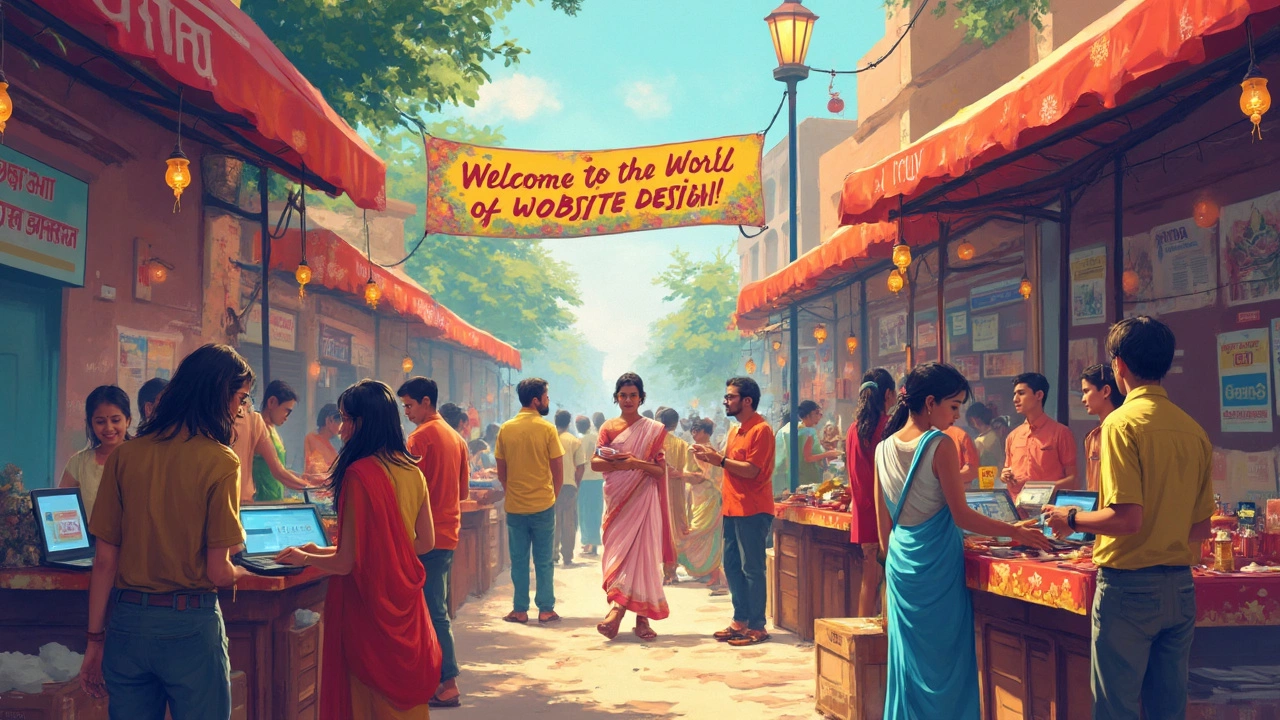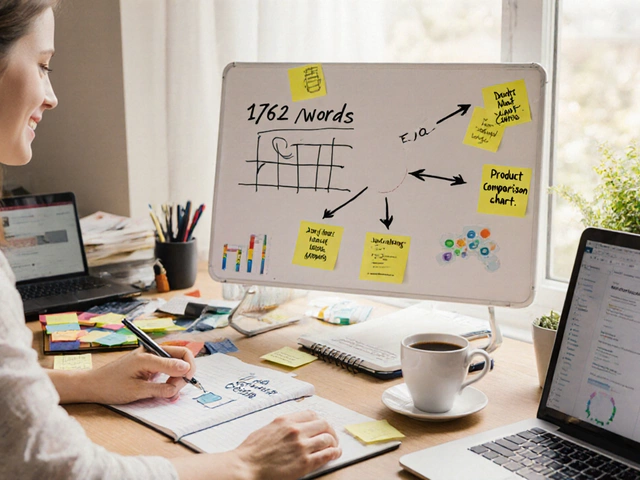In today's digital age, building a website isn't the daunting task it used to be. Thanks to modern tools, almost anyone can dive into website design—even beginners. Whether you're starting a personal blog or setting up a site for your small business, there are tools out there to help you get started.
The key is knowing where to look and how to use these tools. Website builders like Wix, Squarespace, and WordPress have made it simple to drag and drop your way to a website that's not only functional but also looks great. These platforms often come with customizable templates, so you can tailor your site to fit your vision without needing to code.
But before you start clicking away, it's crucial to have a plan. Ask yourself: What's the purpose of your website? Who's your target audience? Answering these questions will give your design direction and make sure your website meets your goals.
- The Power of Modern Tools
- Start with a Clear Plan
- Learning the Basics
- Common Pitfalls to Avoid
- Keeping Up with Trends
The Power of Modern Tools
Ever wondered how even complete beginners can create stunning websites these days? It's all about the power of modern tools. If you can point and click, you can build a website. It's that simple.
Website Builders: Your New Best Friend
Website builders like Wix, Squarespace, and WordPress are the go-to choices for those starting. These platforms offer a user-friendly interface where you can drag and drop elements to customize your site. They're constantly evolving, meaning they add new features that keep up with the latest design trends.
The best part? You don't need to know a single line of code. According to Chris Coyier, co-founder of CSS-Tricks,
"Website builders have democratized website design, opening up the creative world to people who once thought it was out of their reach."
Customizable Templates
Most of these tools offer customizable templates, so your website doesn't look like everyone else's. You can adjust colors, fonts, and layouts to suit your style and purpose. With hundreds of templates available, you're sure to find something that fits your niche, whether you're setting up a blog or an e-commerce site.
A Little Extra: Stats at a Glance
| Platform | Users (in millions) |
|---|---|
| WordPress | 810 |
| Wix | 200 |
| Squarespace | 25 |
These numbers highlight how mainstream these tools have become. With millions of users worldwide, you're tapping into a community that continues to grow.
Plugins and Extensions
Want to add extra features? Most website builders support plugins and extensions. These are add-ons that enhance your site, like SEO tools, image galleries, or shopping carts. For instance, WooCommerce is an excellent plugin for turning a WordPress site into a full-fledged online store.
Staying Updated
The web design field is always evolving. These website design tools are regularly updated, offering new options and improvements to keep your site fresh. You don't have to worry about a whole redesign process every time a trend shifts.
In short, the combination of user-friendly design and constant innovation makes modern web tools a great choice for those stepping into the world of website design.
Start with a Clear Plan
Before diving into the world of website design, you need to have a roadmap. A clear plan will keep you focused and ensure your site serves its purpose.
Define Your Goals
Consider what you want your website to achieve. Is it to showcase a portfolio, sell products, or share your thoughts on a blog? Knowing your objectives guides every design decision you make.
Identify Your Audience
Who will visit your site? Is it tech-savvy millennials or local customers looking for your store hours? Understanding your audience's needs shapes the content and style of your website.
Sketch Out a Basic Structure
Start with a simple site map. Consider key pages like Home, About, Services, and Contact. This layout acts as the backbone of your website and helps you visualize the user's journey.
Research and Gather Inspiration
Look at other websites, especially those in your niche. Identify what you like and what works well, but also note what could be improved. This way, you'll know what to include in your design.
Content Planning
Content is key in keeping visitors engaged. Plan out your web copy, images, and any media you'll need. Create a mix of engaging text and visuals to create the perfect user experience.
Create a Timeline
Building a website takes time. Set a timeline for each part of the process—from design to launch. This helps you stay on track and ensures your site is ready when you need it.
Remember, a well-thought-out plan will make the whole web development journey smoother and more enjoyable!

Learning the Basics
So you're ready to dive into website design? Awesome! First things first, getting the hang of the basic concepts is key. Understanding just enough of what goes on behind the scenes can really help you out.
Understanding HTML and CSS
At the core of every website are two essential languages: HTML and CSS. HTML, or HyperText Markup Language, is what structures the content of your site—think of it as the skeleton. For example, headings, paragraphs, and images are all organized with HTML. Meanwhile, CSS, or Cascading Style Sheets, deals with styling. It’s what makes your site look pretty. Colors, fonts, and layouts are all jazzed up with CSS. Even if you use a builder, knowing the basics of these will help you tweak things to fit your brand.
Diving into Design Principles
When you think about designing a website, it's not just about making it look good. It's all about user experience. A clean layout, easy navigation, and quick load times make a world of difference. Remember this golden rule: less is more. Overloading your site with flashy elements can confuse visitors.
Utilizing Content Management Systems (CMS)
If you're feeling adventurous, consider exploring WordPress, one of the most popular CMS platforms. It's free and open-source, which makes it a favorite for beginners. You'll find loads of plugins that add cool features and themes to match almost any style you want. Plus, there are tons of tutorials online to help you get the hang of things.
- Tip: Always preview changes before you hit publish. It saves you from accidental mishaps.
- Tip: Back up your data regularly to avoid any unexpected losses.
Practice Makes Perfect
Sure, the idea of learning these basics can feel overwhelming at first. But with some patience and practice, you'll get the hang of it quicker than you think. Try building a few sample pages—the best way to learn is by doing.
| Platform | Ease of Use | Cost |
|---|---|---|
| Wix | Very Easy | Free + Paid Options |
| Squarespace | Easy | Paid |
| WordPress | Moderate | Free + Paid Options |
With these fundamental skills under your belt, you're well on your way to designing a website that not only looks good but works well too. You got this!
Common Pitfalls to Avoid
As exciting as designing a website can be, especially for beginners, there are a few traps you might stumble into. The good news? They're easy to dodge if you know what to look out for.
Not Planning Ahead
Jumping straight into web design without a plan is like setting off on a road trip with no map. You'll waste time, and the end result might not make much sense. Before you touch any tools, spend a little time jotting down your website's goals and layout ideas. A clear plan can make your design process much smoother.
Overcomplicating the Design
It's tempting to use all the bells and whistles that come with website design tools. But simplicity matters. Overloading your site with flashy animations and too many elements can overwhelm visitors and slow down your page. Focus on clean, intuitive designs that clearly communicate your message.
Ignoring Mobile Optimization
Did you know more than half of internet traffic comes from mobile devices? Neglecting mobile optimization is a critical mistake. Always check how your design looks on phones and tablets. Most web development tools offer responsive templates; use them.
Poor Navigation
If users can't find what they're looking for, they're likely to leave. Ensure your navigation is straightforward—clearly labeled menus and logical links are your best friends here. A user-friendly design keeps visitors around longer.
Forgetting SEO Basics
Even the most beautiful site won't get much traffic if people can't find it. Use basic SEO practices like including keywords in your content, optimizing image alt texts, and keeping the site speed snappy. These steps help boost your visibility on search engines.
| Common Pitfall | Solution |
|---|---|
| Not Planning Ahead | Define goals and structure before starting. |
| Overcomplicating Design | Keep it simple; focus on key elements. |
| Ignoring Mobile Optimization | Use responsive templates and check on devices. |
| Poor Navigation | Ensure clear menus and easy-to-find links. |
| Forgetting SEO Basics | Implement basic SEO practices for better reach. |

Keeping Up with Trends
In the buzzing world of website design, trends are like fashion—they're ever-changing and can really set your site apart. Keeping your website looking fresh and modern can be a game changer, especially with user expectations constantly evolving. You don't want your site to look like it was made in the Stone Age, do you?
Follow Influential Designers
One awesome way to stay updated is by following influential designers and tech blogs. Sites like Smashing Magazine or even sections on platforms like Medium are regularly updated with the latest web development tips and trends. Designers often share their insights and new techniques on social media too, so keep an eye on that.
"Websites are now like living organisms, adapting and growing with each new trend." — Tom Greenwood, Co-Founder of Wholegrain Digital
Embrace New Tech
Then there's technology. New tools and features pop up all the time. Are your users keen on voice search? Time to explore integrating voice search capabilities. What about dark mode? It's increasingly popular and helps with aesthetics and battery life.
UX and UI Matter More Than Ever
And let's not forget user experience (UX) and user interface (UI). They are getting more attention, as they should. A clean, easy-to-navigate site isn't just nice to look at; it's what users expect. Making sure your design is intuitive can keep visitors sticking around longer.
Here's a quick look at what people are digging in 2025:
- Minimalistic designs
- 3D elements and animations
- Mobile-first designs
Of course, not every trend will suit your site. It’s all about picking what aligns with your brand and what your audience finds appealing. By doing this, you'll ensure your website not only keeps up with the current look but enhances your user’s experience too.



